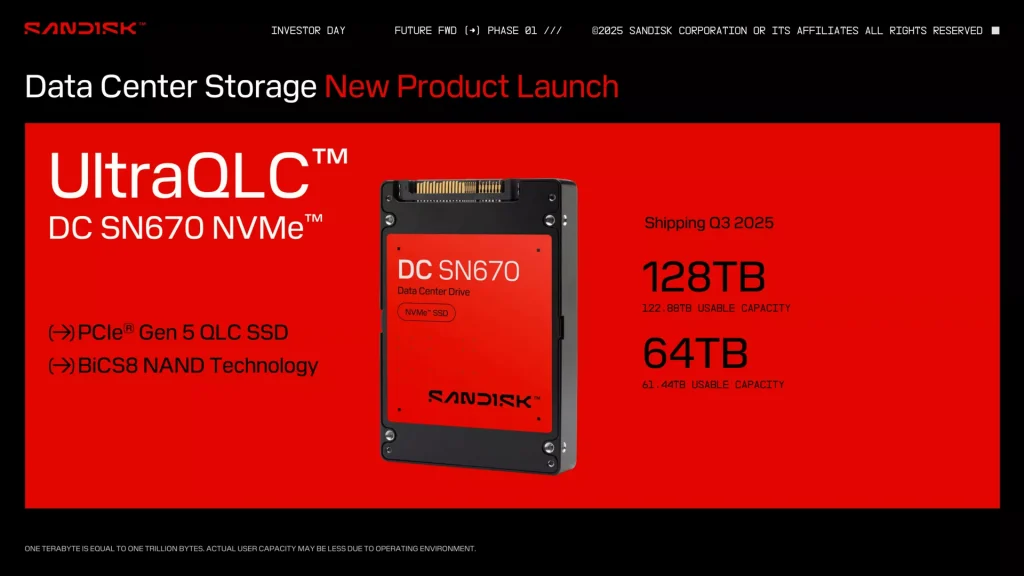
SanDisk, a renowned memory manufacturer, is currently developing a high-capacity solid-state drive (SSD) architecture under the codename “Stargate” — sharing its name with OpenAI’s own Stargate project. With this initiative, SanDisk aims to significantly advance enterprise-level SSD storage technology.
Previously a subsidiary of Western Digital, SanDisk has since spun off and become independently listed. Some former Western Digital engineers have remained with SanDisk to spearhead new ventures. Recently, SanDisk disclosed the potential of the Stargate project to investors.
SanDisk plans to unveil a 512TB SSD by 2027, with the ultimate ambition of delivering a drive boasting a staggering 1PB capacity.
According to the roadmap, the Stargate initiative involves a novel controller architecture and custom ASIC designs. Although technical specifics remain largely undisclosed, SanDisk has already revealed a product timeline for Stargate, which includes SSDs reaching the 1PB class.
The roadmap outlines a 128TB SSD release in 2025, followed by a 256TB model in 2026, culminating in the 512TB version in 2027. The long-term vision is to cater to the surging demand for high-performance storage from AI enterprises and major technology firms with a 1PB SSD.
Other storage manufacturers have also taken note of the data storage demands driven by AI-focused companies. For instance, Seagate plans to release a 100TB mechanical hard drive by 2030. However, SSDs with similar capacities from SanDisk are expected to carry a higher price tag, prompting many organizations to continue relying primarily on mechanical drives to strike a balance between cost and performance.
The Stargate platform will power a new enterprise storage solution branded Ultra QLC. As part of the plan, SanDisk intends to introduce 64TB and 128TB SSDs in Q3 2025. These drives will offer a 68% improvement in random read speed, a 55% boost in random write speed, and sequential read and write enhancements of 7% and 27%, respectively.
The Ultra QLC series will utilize the PCIe 5.0 interface. Thanks to QLC NAND technology, individual chips will reach capacities of up to 2TB. SanDisk also plans to adopt the forthcoming PCIe 6.0 standard. These products, however, are designed exclusively for the enterprise market and are not expected to be available to consumers in the near term.


